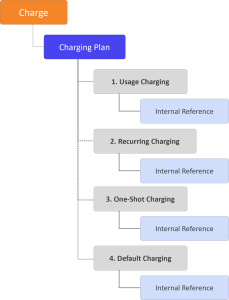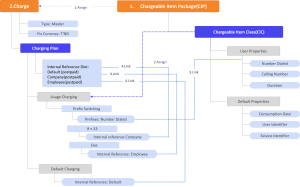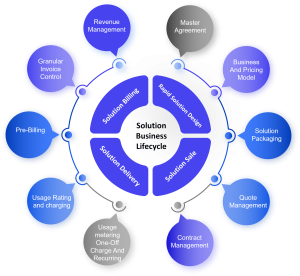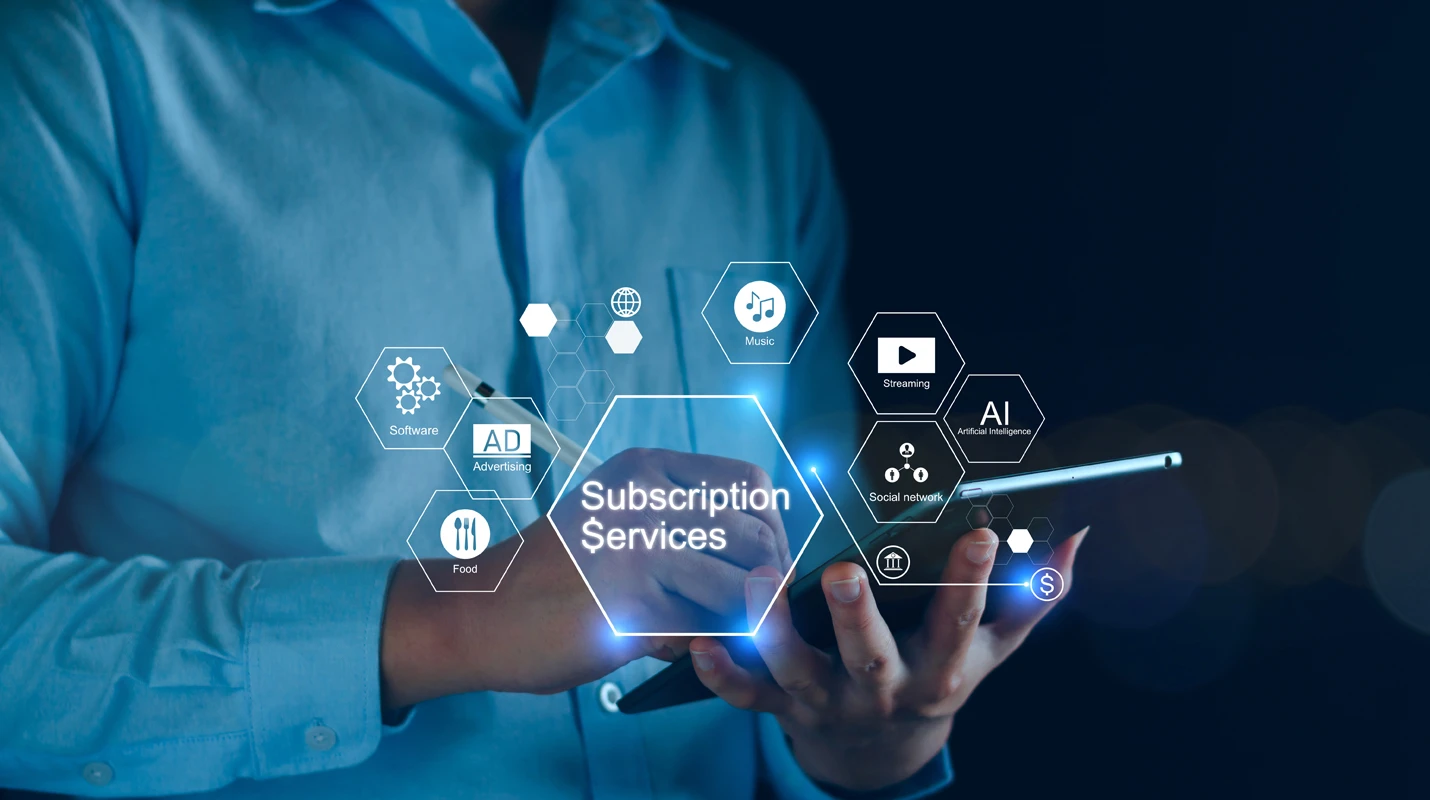For enterprises navigating the digital economy, the traditional billing system did not cut it down. SAP Brim is the end-to-end solution of SAP that helps customizing high-volume businesses how they mimic the services. SAP BRIM (east SAP Hybris Billing) is a next-generation billing platform that caters to high-volume businesses that thrive on recurring and use-based revenue. Whether you are offering membership, pay-use services, or complex bundles, SAP Brim gives you the right to manage pricing, rating, challan, and revenue sharing-within the integrated structure created for all speeds, accuracy, and scalability.
Key Components of SAP BRIM
SAP BRIM is built on four powerful components that work together to manage the entire quote-to-cash process for subscription and usage-based services. Each module plays a critical role in driving revenue accuracy, operational efficiency, and customer satisfaction.
Subscription Order Management (SOM)
Manages end-to-end customer lifecycles—from product configuration and order capture to fulfilment and changes over time.
SAP Convergent Charging (SAP CC)
A real-time, rules-based engine that rates and charges usage events with high flexibility and performance.
SAP Convergent Invoicing (SAP CI)
Consolidates rated usage and recurring charges into a single invoice, ensuring streamlined billing and transparency.
Contract Accounts Receivable and Payable (FI-CA)
Handles financial transactions, collections, dunning, and account settlements at scale for high-volume billing environments.
What Can You Do with SAP Convergent Charging?
SAP Convergent Charging
SAP Convergent Charging (SAP CC) is a part of the SAP BRIM (Billing and Revenue Innovation Management) suite. It is a high-performance, flexible rating and charging engine designed for industries that rely heavily on usage-based services such as telecom, utilities, media, or subscription services.
In simple terms:
SAP CC takes raw usage (like data, minutes, or transactions) and figures out how much to charge a customer, based on complex pricing and business rules.
SAP Convergent Charging supports various payment models:
- Prepaid
- Postpaid
- Hybrid
Here’s what you can do with SAP Convergent Charging:
Real-Time Charging
- Apply charges instantly as services are consumed (e.g., streaming a movie, making a phone call).
- Supports both prepaid and postpaid charging models.
- Allows real-time balance management—critical for prepaid services.
Complex Pricing and Rating
- Set up flexible pricing models: tiered pricing, time-of-day pricing, volume discounts, bundling, etc.
- Supports dynamic pricing based on usage, customer profile, geography, or even promotions.
- Can rate both recurring and usage-based charges (e.g., monthly subscriptions + per-use fees).
Product and Offer Management
- Create and manage products, offers, and price plans quickly.
- Combine multiple services into bundled offerings (e.g., mobile + internet + TV).
- Integration Capabilities
- Integrates with SAP Subscription Billing, SAP Convergent Invoicing, and SAP Customer Financials.
- Works with third-party CRM, ERP, and network systems (e.g., OSS/BSS in telecom).
- Can be deployed on-premises or in the cloud (e.g., SAP S/4HANA).
Policy and Business Logic
- Includes a charging logic editor to define how charges should be applied based on specific conditions.
- Let’s you enforce business rules in real-time—e.g., throttling after a data cap is reached.
High-Performance, Low-Latency
- Designed for environments that require millions of transactions per day with very low latency (like telcos).
- Supports horizontal scaling to handle spikes in usage.
Security and Compliance
- Ensures data privacy and compliance with regulations like GDPR.
- Supports audit trails, role-based access, and secure APIs.
Flexible and Rapid Business Model Design
SAP Convergent Charging helps you ensure a fast time to market for your new chargeable services or products.
The SAP Convergent Charging helps you to:
- Rapidly design subscription, recurring, and usage-based pricing for your chargeable services or products
- Quickly launch new commercial offers with the necessary pricing configuration in SAP Convergent Charging.
- Implement and run pricing configuration and logic based on reusable settings.
- Easily maintain the pricing configuration.
Rating process
Convergent Charging is responsible for taking raw usage data (like a phone call, megabytes of data, or video streaming time) and applying complex rules to determine how much to charge for that usage.
Here’s a simplified breakdown of the Rating process in SAP CC:
Overview of SAP CC Rating Process
Usage Collection (Outside SAP CC)
- Usage events (calls, data, messages, etc.) are captured by network elements or mediation systems.
- These are formatted into chargeable items and sent to SAP CC in real-time or batch.
Receiving the Chargeable Item
- SAP CC receives a chargeable item (CI) via web service or batch file.
- The CI includes details like:
- Event timestamp
- User ID or service ID
- Resource consumed (e.g., data volume, call duration)
Mapping to a Charging Logic
- SAP CC uses Charging Plans to determine the applicable logic.
- Charging Plans reference:
- Rate Plans (e.g., $0.10/MB, first 100 MB free)
- Allowance Logic (e.g., bundles, discounts)
- Hierarchy (account level, contract level)
Execution of Rating Logic
- The rating engine calculates charges based on:
- Usage type
- Quotas or thresholds (e.g., fair usage policy)
- Time of use (peak/off-peak)
- Supports:
- Prepaid (real-time balance check)
- Postpaid (accruals for later invoicing)
Generation of Charge Result
- Outputs a Rated Consumption Item (RCI) or Rated Event.
- This includes:
- Amount charged
- Currency
- Tax details (if integrated)
- Rated volume
Sending Results
- RCI is passed to SAP Convergent Invoicing (CI) for invoicing.
- Optionally, forwarded to SAP SOM (Subscription Order Management) or SAP CRM.
Price Plan, Charge & Charge Plan in CC (convergent charging)
A charge plan outlines how and when a customer is billed for the services they use—essentially translating service usage into revenue. Each charge plan can include one or multiple pricing components based on the nature of the offering.
Behind the scenes, the charging framework runs on two essential engines:
- The rating process, which calculates the cost-of-service consumption
- The charging process, which applies that cost to the customer’s prepaid or postpaid account
Together, these are modeled through:
- A Price Plan, defining how usage is rated
- A Charging Plan, dictating how and when charges are applied to accounts


Allowance Logic
The allowance logic in SAP Convergent Charging (SAP CC) is a reusable object that belongs to the pricing catalogue (in master data) of the chargeable service. The allowance logic includes decision trees that define the rules and conditions of use of a contract allowance that is based on this logic.
The allowance plan uses the allowance logic that you can customize.
The allowance logic performs calculations only when the allowance plan is triggered by:
- Any allowance event
- A periodic allowance event
- A one-shot allowance event
Tariff Modelling
Tariff modeling is the process of designing and configuring how usage events are priced in SAP CC. It’s used to define rates, conditions, and rules for charging, and is built using these core components:
| Component | Purpose |
| Rate Plans | Define price per unit of usage (e.g., $0.10 per MB) |
| Charging Plans | Combine rate plans with conditional logic |
| Pricing Trees | Visual logic for complex rating scenarios |
| Time Models | Apply different rates by time (e.g., peak/off-peak) |
| Allowance Models | Set free usage thresholds or bundles |
| Charging Contexts | Define dynamic inputs (e.g., region, user type) |
Steps in SAP CC Tariff Modelling
1. Define Rate Plans
This is the actual price logic.
Example:
- Rate Plan A: $0.10 per MB
- Rate Plan B: $0.00 for first 500 MB, then $0.05 per MB
You can define:
- Linear rates
- Tiered rates
- Time-based rates
- Volume thresholds
2. Create Pricing Trees
These are logical flows used inside charging plans. You can model:
- What happens when a user goes over their quota
- Different rates based on service type
- Real-time balance checks for prepaid
Example:
plaintext
Copyedit
[Start]
↓
[Check if Allowance Available?]
↓
Yes ─► [Apply Free Rate]
No ─► [Apply Paid Rate Plan]
↓
[Apply Tax, Discounts]
3. Build Charging Plans
A Charging Plan combines:
- A Pricing Tree
- Rate Plans
- Inputs from charging contracts or product catalogs
You assign Charging Plans to customers via Charging Contracts.
4. Configure Allowances & Bundles (if needed)
Model plans like:
- “First 10 GB free, then $0.01/MB”
- “Monthly recurring data pack”
- “Unused GBs rollover to next month”
Example: Mobile Data Tariff Model
| Tier | Data Range | Price |
| Tier 1 | 0–2 GB | $0 (Free Allowance) |
| Tier 2 | 2–10 GB | $0.01/MB |
| Tier 3 | >10 GB | $0.02/MB |
This model would use:
- A tiered Rate Plan
- A Pricing Tree to apply correct tier
- An Allowance Model for the 2 GB free
Benefits of SAP CC Tariff Modelling
- High Flexibility: Customize offers per region, time, or customer
- Real-Time Ready: Supports online rating and balance management
- Reusable: Use one tariff model across multiple plans or product variants
To dive deeper into the architecture and capabilities of the SAP Convergent Charging Engine, read our full blog here: SAP Convergent Charging (CC): Smart Billing & Revenue
SAP Convergent Charging helps you to:
- Design and change end-customer pricing and partner revenue-sharing models quickly.
- Put spending power in the hands of your customers
- Automate complex billing scenarios effortlessly.
- Scale without compromise using a high-performance charging engine.
Business Benefits

- Streamline pricing operations and partner settlements to reduce total cost of ownership while boosting revenue transparency.
- Unify diverse service lines under a scalable billing framework to adapt quickly to evolving business needs.
- Accelerate go-to-market strategies with intuitive pricing design—no heavy coding or IT dependency required.
- Enable pricing teams to launch bold, competitive offers faster, fueling market expansion and innovation.
- Deliver seamless customer experiences through real-time insights and proactive account controls.
- Strengthen loyalty and retention with personalized pricing strategies tailored to customer behavior.
- Simplify your tech stack by centralizing rating and charging processes within one intelligent system.
Conclusion:
SAP Convergent Charging stands at the heart of dynamic, usage-based billing in the SAP BRIM suite. With its real-time charging capabilities, flexible tariff modeling, and high scalability, SAP CC empowers businesses to launch innovative pricing models quickly and respond to market demands with agility. Whether you’re a telecom provider managing millions of daily transactions or a subscription-based platform offering bundled services, SAP CC provides the precision, performance, and flexibility needed to monetize services effectively.
By centralizing rating, charging, and pricing logic, SAP Convergent Charging accelerates time-to-market, lowers operational costs, and enhances the customer experience, making it an indispensable asset in modern digital monetization strategies.
Want to explore how SAP Convergent Charging can transform your billing operations?
Reach out to Mobolutions at info@mobolutions.com for a personalized consultation.






